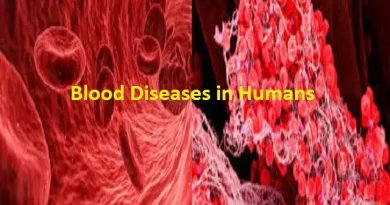Understanding Communicable Diseases: A Comprehensive Guide
Introduction
In today’s fast-paced world, where globalization and frequent travel are the norm, infectious diseases have become a significant concern. This 2000-word article aims to shed light on communicable diseases, their causes, prevention, and impact on society. Join us on this informative journey as we delve into the world of infectious diseases and how to protect ourselves against them.
Communicable diseases, also known as infectious or contagious diseases, are illnesses caused by various microorganisms such as bacteria, viruses, fungi, and parasites. These diseases have the potential to spread from one person to another, often through direct contact, respiratory droplets, contaminated surfaces, or vectors like insects. Communicable diseases can vary widely in terms of severity, from mild infections to life-threatening illnesses. They pose significant challenges to public health systems worldwide, and effective prevention measures such as vaccination, hygiene practices, and vector control are essential in mitigating their impact on society. Understanding the nature of infectious diseases is crucial for individuals and communities to protect themselves and prevent outbreaks.
What Are Communicable Diseases?
Communicable diseases, often referred to as infectious or contagious diseases, are illnesses caused by microorganisms such as bacteria, viruses, fungi, and parasites. These diseases can spread from person to person through various means, including direct contact, respiratory droplets, contaminated surfaces, and even insect bites.
Types of Infectious Diseases
-
Bacterial Infections
Bacterial infections are caused by harmful bacteria. Common examples include strep throat, tuberculosis, and urinary tract infections. These infections can usually be treated with antibiotics.
-
Viral Infections
Viral infections are caused by viruses like the flu, HIV, and COVID-19. Vaccination and antiviral medications are essential tools in controlling the spread of viral diseases.
-
Fungal Infections
Fungal infections, such as athlete’s foot and candidiasis, are caused by fungi. They often thrive in warm and moist environments.
-
Parasitic Infections
Parasitic infections are caused by parasites like malaria and intestinal worms. These diseases are prevalent in tropical regions and can be prevented with proper sanitation and medication.
Causes of Infectious Diseases
The causes of communicable diseases vary depending on the type of pathogen involved. Common factors contributing to their spread include:
-
Poor Hygiene:
- Inadequate handwashing and sanitation practices can lead to the transmission of diseases.
-
Travel and Migration:
- The movement of people across borders can introduce new diseases to different regions.
-
Inadequate Vaccination:
- Low vaccination rates can result in outbreaks of vaccine-preventable diseases.
Prevention and Control
Preventing the spread of communicable diseases is crucial for public health. Here are some effective prevention measures:
-
Vaccination
Vaccination is one of the most effective ways to prevent certain communicable diseases. Vaccines stimulate the immune system to produce antibodies, providing immunity against the disease.
-
Hand Hygiene
Frequent handwashing with soap and water can reduce the risk of infection. Hand sanitizers are also effective when soap and water are not available.
-
Safe Practices
Practicing safe sex, using condoms, and avoiding sharing needles can prevent the transmission of sexually transmitted infections (STIs) like HIV.
-
Vector Control
In areas where vector-borne diseases are prevalent, controlling insects like mosquitoes is essential. This can be achieved through the use of insect repellents and mosquito nets.
Impact on Society
The impact of communicable diseases on society is profound. Outbreaks can strain healthcare systems, lead to economic losses, and disrupt daily life. The COVID-19 pandemic is a recent example of how a communicable disease can have global repercussions.
Conclusion
In conclusion, communicable diseases are a significant public health concern. Understanding their causes and prevention measures is crucial for safeguarding our communities. By adopting proper hygiene practices, getting vaccinated, and staying informed, we can collectively combat the spread of these diseases.
FAQs
- What is the difference between communicable and non-communicable diseases? Communicable diseases can be transmitted from one person to another, while non-communicable diseases cannot be spread through direct contact.
- Are all communicable diseases preventable with vaccines? No, not all communicable diseases have vaccines. However, many vaccine-preventable diseases can be controlled through vaccination.
- How can I protect myself when traveling to areas with a high risk of communicable diseases? Consult with a healthcare provider for recommended vaccinations and practice good hygiene while traveling.
- What role do antibiotics play in treating communicable diseases? Antibiotics are effective against bacterial infections but do not work against viral, fungal, or parasitic diseases.
- Is it safe to receive multiple vaccines at once? Yes, it is generally safe to receive multiple vaccines during a single visit to a healthcare provider. This practice, known as combination vaccines, helps reduce the number of shots needed.
Also, Read about: World’s Best Honey



